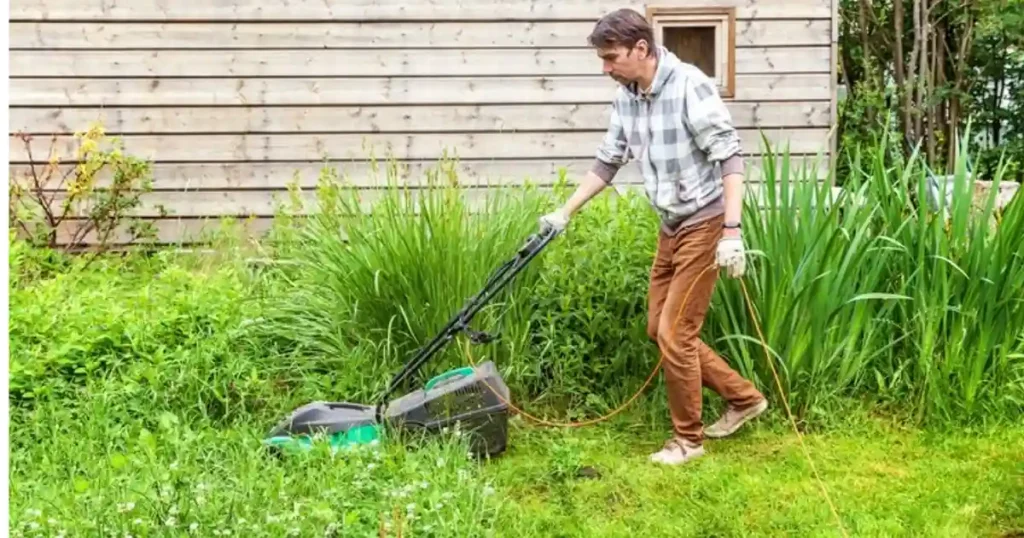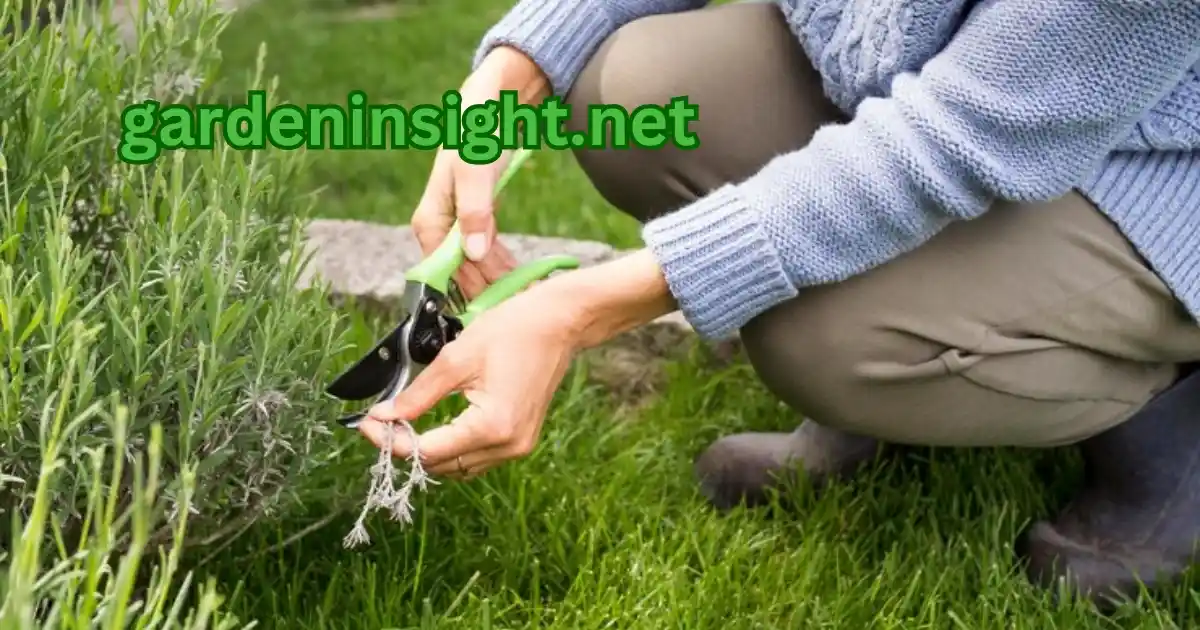Unwanted grass can quickly turn a beautiful garden into a weedy mess. Whether it’s creeping into flowerbeds, choking vegetables, or ruining your lawn, effective grass removal is essential for a thriving outdoor space.
This guide provides various methods to get rid of grass in garden, from simple hand-pulling to more advanced techniques, tailored to different garden types and grass species.
Understanding Your Grass Problem

Before you start pulling or spraying, it’s important to identify the type of grass you’re dealing with. Different grasses have different growth habits and respond differently to various removal methods. Common garden invaders include:
- Nut Grass: A persistent weed with underground tubers.
- Bermuda Grass: A vigorous, mat-forming grass.
- Couch Grass: A fast-spreading grass with rhizomes.
- Crabgrass: An annual weed that thrives in warm weather.
- Coarse Grass: A general term, often referring to unwanted, thicker grasses.
- Quack Grass: A perennial weed with extensive rhizomes.
Methods To Get Rid of Grass In Garden
The best approach depends on the type of grass, the size of the infestation, and your personal preferences.
Manual Removal
Hand-pulling is effective for small patches of grass, especially in garden beds. Make sure to remove as much of the root system as possible to prevent regrowth. A garden fork or trowel can be helpful for loosening the soil and extracting stubborn roots.
Smothering
Covering the affected area with a thick layer of mulch, cardboard, or plastic sheeting can deprive the grass of sunlight and eventually kill it. This method is particularly useful for larger areas and works well for grasses like Bermuda and couch grass.
Solarization
This technique uses the sun’s heat to “cook” the grass and weeds. Cover the area with clear plastic sheeting during the hottest part of the summer, sealing the edges to trap heat. Solarization is effective for killing a wide range of grasses.
Herbicides
Herbicides can be a quick and efficient way to eliminate grass, but it’s important to choose the right product for the type of grass you’re targeting and to follow the instructions carefully. Glyphosate-based herbicides are effective for many types of grass, but they can also harm other plants. Selective herbicides are designed to target specific types of weeds without harming desirable plants.
Vinegar
Household vinegar can be used as a natural herbicide, but it’s only effective on young weeds and may need to be applied multiple times. Vinegar is most effective on annual grasses like crabgrass.
Tilling
Tilling the soil can be an effective way to remove grass, but it can also bring weed seeds to the surface, leading to new growth. Tilling is best used in preparation for planting and should be followed by mulching to prevent regrowth.
How to Get Rid of Grass in a Garden Bed
Garden beds require extra care. Hand-pulling is often the best method for small infestations. For larger areas, consider smothering or solarization. Avoid using herbicides that could harm your flowers or vegetables.
How to Get Rid of Grass in a Vegetable Garden
Similar to flowerbeds, hand-pulling and smothering are good options for removing grass from vegetable gardens. Be careful when tilling, as you don’t want to damage the roots of your vegetables.
How to Get Rid of Nut Grass in a Garden
Nut grass is notoriously difficult to eradicate. Its underground tubers make it resistant to many removal methods. Consistent hand-pulling, ensuring you remove all tubers, is crucial. Smothering and solarization can also be effective, but may require multiple treatments.
How to Get Rid of Bermuda Grass in a Garden
Bermuda grass spreads quickly through rhizomes. Smothering and solarization are effective methods. Tilling can actually spread Bermuda grass if the rhizomes are not completely removed.
How to Get Rid of Couch Grass in a Lawn
Couch grass is another aggressive spreader. Similar to Bermuda grass, smothering and solarization can be effective. A combination of these methods with careful raking to remove dead material is recommended.
How to Get Rid of Crabgrass in a Lawn
Crabgrass is an annual weed. Pre-emergent herbicides can prevent crabgrass from germinating in the spring. Post-emergent herbicides can kill crabgrass that has already sprouted.
How to Get Rid of Coarse Grass in a Lawn
Coarse grasses can be challenging. Identify the specific type of grass and choose a selective herbicide that targets it without harming your desired lawn grass.
How to Get Rid of Quack Grass in a Lawn
Quack grass is a perennial weed with extensive rhizomes. Consistent digging to remove all rhizomes is essential. Smothering or solarization can also be effective.
Informational Tables
Table 1: Grass Removal Methods Comparison
| Method | Effectiveness | Best For | Pros | Cons |
|---|---|---|---|---|
| Hand-pulling | High | Small areas, garden beds | Environmentally friendly, precise | Time-consuming, difficult for large areas |
| Smothering | Medium | Large areas, Bermuda grass, couch grass | Simple, effective for large areas | Takes time, may kill other plants |
| Solarization | High | Large areas, various grass types | Effective, kills a wide range of weeds | Requires hot weather, takes time |
| Herbicides | High | Large infestations, specific grass types | Fast, efficient | Can harm other plants, environmental concerns |
| Vinegar | Low to Medium | Young weeds, annual grasses | Natural, readily available | May need multiple applications, less effective on established weeds |
| Tilling | Medium | Preparing for planting | Effective for removing existing grass | Can bring weed seeds to the surface |
Table 2: Common Grass Types and Identification
| Grass Type | Characteristics |
|---|---|
| Nut Grass | Triangular stems, underground tubers |
| Bermuda Grass | Mat-forming, runners, drought-tolerant |
| Couch Grass | Fast-spreading, rhizomes, fine leaves |
| Crabgrass | Annual, spreading, low-growing |
| Coarse Grass | Thick, wide blades, often unwanted in lawns |
| Quack Grass | Perennial, extensive rhizomes, tough stems |
Conclusion
Getting rid of unwanted grass requires a strategic approach. Understanding the type of grass you’re dealing with is the first step. From there, you can choose the most appropriate method, whether it’s manual removal, smothering, solarization, or the careful use of herbicides.
By combining these techniques and practicing regular maintenance, you can create a beautiful, weed-free garden that you can enjoy all season long. Remember to prioritize environmentally friendly methods whenever possible and always follow product instructions when using herbicides.
With patience and persistence, you can conquer your garden and create the outdoor space of your dreams.
FAQs
Some of the frequently inquired questions about ways to get rid of grass in garden are given as follow:
What is the fastest way to get rid of grass in my garden?
The fastest way often involves using herbicides, but it depends on the type of grass and the size of the area. For small areas, hand-pulling may be the quickest.
How can I get rid of grass without using chemicals?
Smothering, solarization, and hand-pulling are effective chemical-free methods.
Is vinegar effective for killing grass?
Vinegar can kill young weeds, but it’s not as effective on established grasses or perennial weeds.
How do I prevent grass from growing in my garden?
Mulching is a great way to prevent grass from growing. Regular weeding and using pre-emergent herbicides can also help.
What is the best time to remove grass?
The best time to remove grass depends on the method you’re using. Hand-pulling can be done anytime, while solarization is most effective in the summer.
